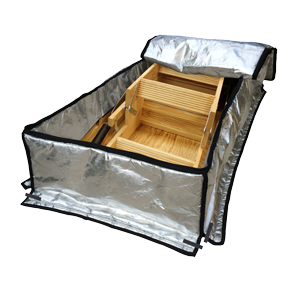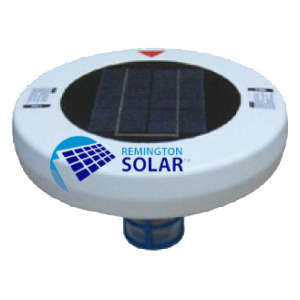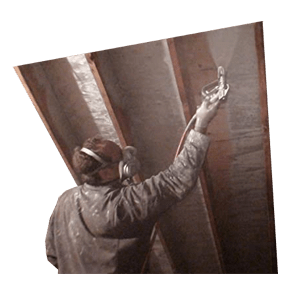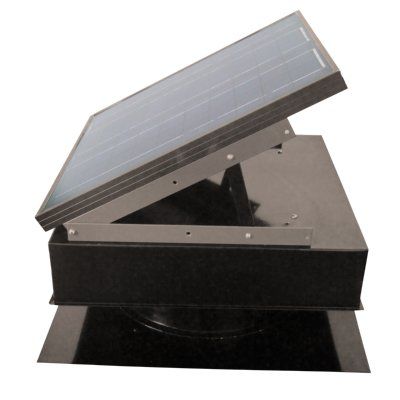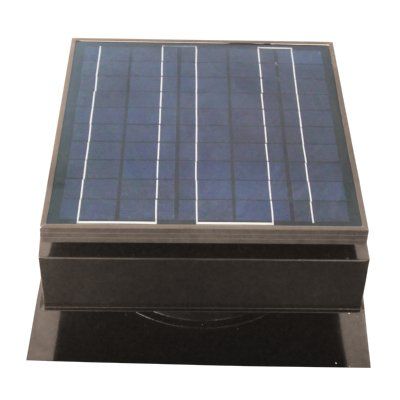20-Watt Attic Fan, 25-Watt Attic Fan 30 Watt Attic Fan
What is a Remington Solar Attic Fan?
The Remington Solar™ Solar Attic Fan is a simple and environmentally sensible solution that can save you money.
By the way…..if you’re already familiar with solar attic fan technology, and you’re shopping around for the best value, let me put your mind at ease.
It is documented science that solar attic fan technology works. Most all solar attic fans in marketplace will do the job to get the hot air (lots of BTU’s) out of your attic. That’s a good thing.
But why Remington Solar? Here’s how to compare.
First, look for wattage and motor voltage. When you’re in a Lowe’s or Home Depot or Costco, notice their fans are 10 watts or 12 watts with a 12 volt brushed motor.
We don’t even make a 10 or 12 watt fan because they don’t do the job. Our smallest fan is a 20 watt fan with a 24-38 volt brushless motor. A 20 watt fan typically moves twice the air as a 10 watt fan. So compare our 20 watt pricing to other fans with 20 watts, or 30 watts to 30 watts, etc.
So how does the Remington Solar attic fan work?
Powered completely by free solar energy, this sleek and efficient vent is both compact and quiet.
Fully operational right from the box, it installs easily, with no electrical wiring, no expensive electrician and city permits.
Place it wherever you need improved circulation such as attics, lofts, workshops, storage sheds, garages, even barns.
Attic venting is an important aspect in maintaining a healthy energy efficient home. Proper venting cools your roof extending the material life and reduces the load on your air conditioning system. Attic venting also increases fresh air circulation which reduces vapor build-up generated by every day activities like showering and cooking.
Excess moisture trapped in your attic can cause a variety of problems from rust and rot to increased bacteria and mold counts which can have a direct impact on respiratory health.
Passive vents have been a part of building codes for years. Soffit vents, ridge vents and louvers rely on nature to provide sufficient air pressure and air movement. So the majority of the time your attic is stagnant and continues to build up heat and moisture.
Remington Solar ™ Advantages:
1. Minimize back pressure of exhaust gases.
- Remington Solar™ solar attic fan incorporates an angled throat within the flashing that provides a “Venturi” effect, which increases airflow.
- Remington Solar™ attic fan was designed from the ground up to minimize obstructions in the flashing and shroud.
2. Maximize the exposure of the sun to the solar panel.
- Remington Solar™ Solar attic fan designed a mounting bracket that houses the solar panel that allows for angling the panel.
- Remington Solar™ Solar attic fan offers an optional special order remote solar panel which is installed away from the attic fan housing. It is used in applications where there is limited sunshine where the unit is to be installed. The remote panel is installed in a sunny area, capturing maximum amount of sunlight and therefore achieving optimal attic fan performance.
3. Minimize the ambient temperature of the solar panel because power output rapidly declines as temperature increases.
- Remington Solar™ Solar attic fan powder coats the entire assembly, inside and out, in a neutral gray color thus ensuring that it does not act like a heat sink.
- Remington Solar™ The solar panel mounting bracket allows for an envelope of cool air to continually circulate around the entire solar panel.
4. Adaptable to any location, roof type, in any environment.
- Remington Solar™ Solar attic fan is constructed of high performance steel, the flashing and shroud are seamless ensuring weather tight installations.
- Stainless steel animal protection screen.
- Stainless steel hardware throughout.
- Powder coated to withstand any environment.
- 50-Year Neutral Cure silicone bonds the flashing to the roof.
Remington Solar Benefits:
Remington Solar™ lowers attic temperature which reduces the load on the HVAC System.
The most obvious reason for attic ventilation is to lower attic space temperature during the warmer months. Attic temperatures can exceed 160°F during hot summer days. Proper attic ventilation can reduce those temperatures by up to 50°F. No matter how much insulation is in the attic, heat can still transfer into adjacent living spaces. In fact, extra insulation can actually add to temperature increases because heat is trapped in the insulation.
Proper ventilation evacuates this excess heat build-up. As the heat is exhausted, the work load of the A/C system is reduced, thereby saving energy and extending the life of the A/C system.
Remington Solar extends the life of the roofing materials.
Though asphalt shingles are designed to take the abuse of the sun for many years, roofing material is subjected to greater temperatures when the roof decking is allowed to overheat, which is just what happens in an under-ventilated attic.
In the cooler months, moisture is the most serious concern. Even with the use of vapor barriers to keep moisture from entering the attic, there are air leaks around ceiling light fixtures, bathroom exhaust fans that allow unwanted moisture into the attic. Moisture condensing on the framing members and the inside of the roof deck can lead to the growth of mold, mildew and rot in the roof deck and framing. A good indicator of moisture problem is rusty roof nails sticking through the roof deck.
Furthermore, asphalt shingle manufacturers warranties require proper attic ventilation.
Attic ventilation is required in cold environments – it evacuates the warm moist air that heat sources produce. Hot moist air lingering in the attic spaces can condense on the underside of the roof sheathing and rot it out and also causes mold to develop on the interior walls. Cold air in the attic space will not affect the temperature in the adjacent living spaces if properly insulated.
Remington Solar ™ also prevents ice damming in colder climates.
Heavy snowfall can create ice dams that cause a roof to leak along the eaves. An ice dam forms when snow melts over a house’s heated spaces and runs down the roof, only to freeze again over the cold eaves. This ice builds up along the eaves and traps snow-melt water, which eventually flows under the shingles into the attic and causes serious damage. Also, the heavy weight of the ice that fills the rain gutters can potentially rip off the gutters . The best way to prevent ice damming is through proper attic ventilation which will minimize the thaw/freeze cycle.


